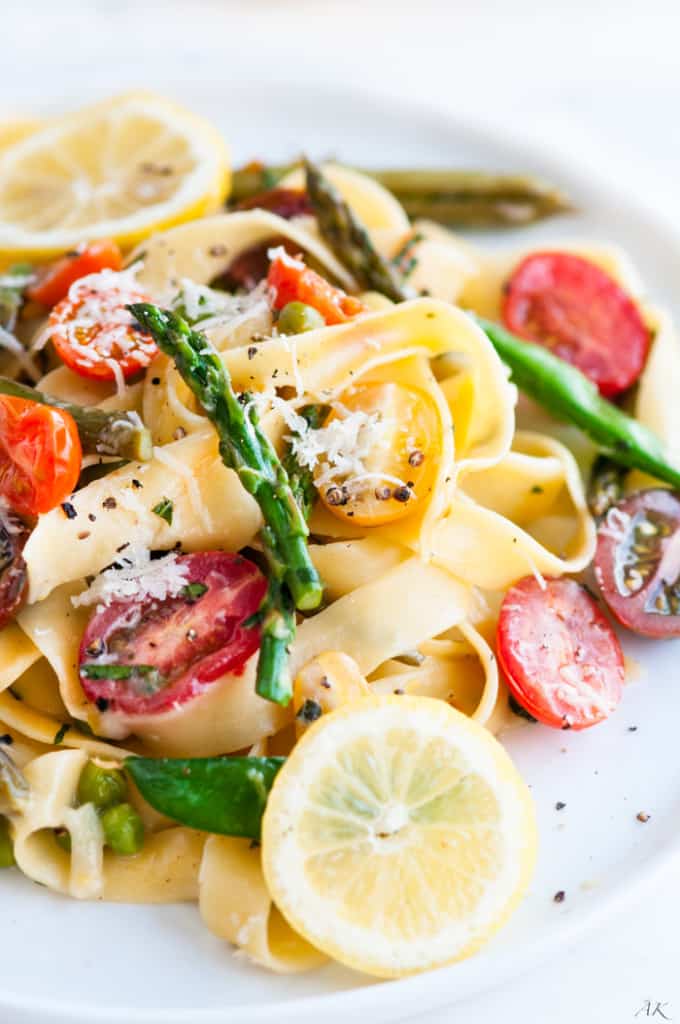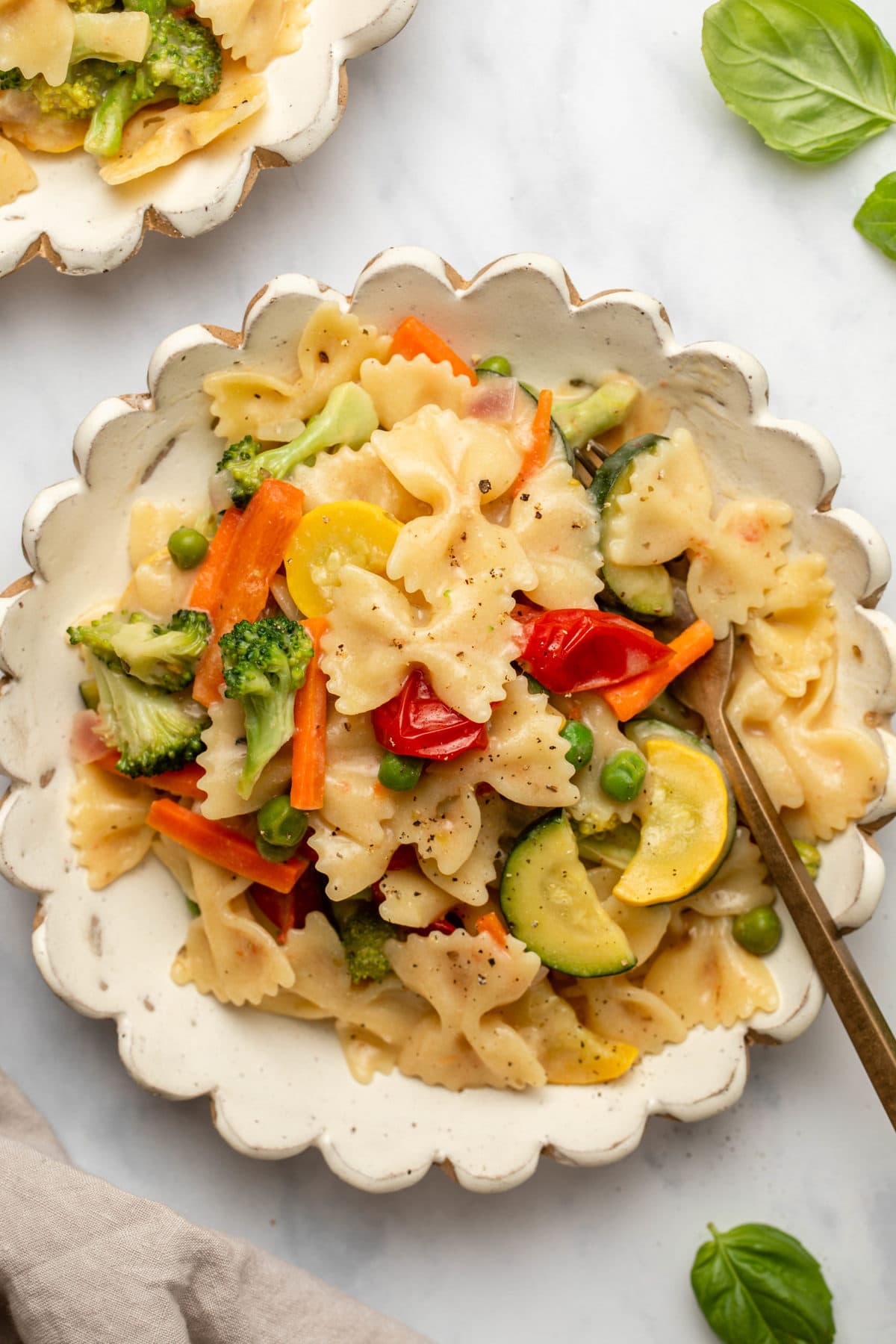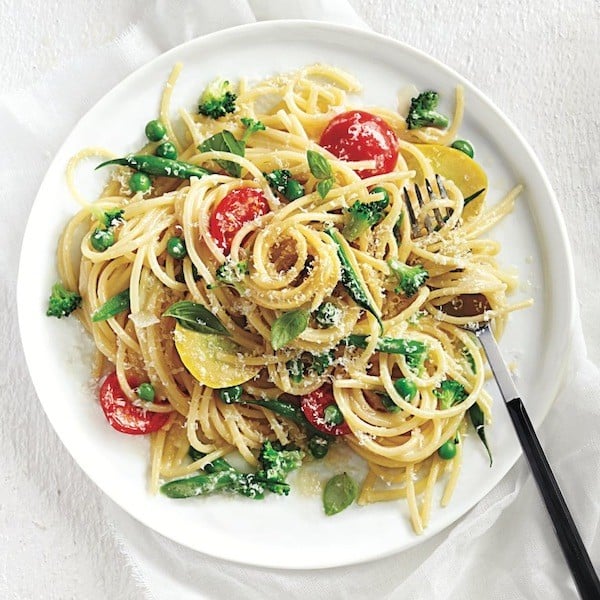Pasta Primavera: A Celebration of Spring on Your Plate

Pasta Primavera, meaning "spring pasta" in Italian, is more than just a dish; it’s a vibrant expression of the season’s bounty. This iconic pasta recipe, characterized by its colorful array of fresh vegetables and light, flavorful sauce, has captivated palates worldwide for decades. Its simplicity belies its versatility, allowing for endless variations based on personal preferences and the availability of seasonal produce. This article delves deep into the heart of Pasta Primavera, exploring its history, variations, nutritional benefits, and the secrets to crafting the perfect dish at home.
A Brief History: From Humble Beginnings to Culinary Icon
While pinpointing the exact origin of Pasta Primavera is challenging, its rise to popularity coincides with the growing interest in lighter, healthier cuisine in the latter half of the 20th century. Unlike its richer, cream-based pasta counterparts, Primavera embraces the natural flavors of fresh vegetables, minimizing the use of heavy sauces and fats. This aligns with the burgeoning health consciousness that emphasized fresh, seasonal ingredients.
Some culinary historians suggest its origins lie in Italian trattorias, where resourceful chefs utilized the abundance of spring vegetables to create a simple yet satisfying dish. The exact recipe likely varied from region to region, reflecting the local produce available. However, the core concept remained consistent: showcasing the vibrant colors and flavors of spring through a medley of vegetables tossed with pasta and a light sauce.
The dish’s widespread popularity, however, is arguably linked to its accessibility and adaptability. It’s a recipe that can be easily customized to suit individual tastes and dietary needs. The absence of a specific, rigid recipe allows for creative freedom, making it a favorite among both amateur cooks and experienced chefs.
The Essential Ingredients: A Rainbow of Flavors and Textures
The beauty of Pasta Primavera lies in its versatility. While there’s no single "correct" recipe, certain ingredients form the foundation of this spring celebration.
-
Pasta: A variety of pasta shapes work well, from classic spaghetti and linguine to more robust shapes like rotini or farfalle. The choice often depends on personal preference and the size of the vegetables used. Consider the texture and how well it will hold the sauce and vegetables.

-
Vegetables: This is where the true artistry of Pasta Primavera shines. The hallmark of the dish is its colorful array of spring vegetables. Common choices include:
- Asparagus: Its tender spears add a subtle sweetness and delicate texture.
- Peas: Sweet and vibrant green, peas provide a burst of freshness.
- Broccoli florets: Adds a slightly bitter counterpoint to the sweetness of other vegetables.
- Carrots: Adds a touch of sweetness and vibrant orange color.
- Bell peppers (various colors): Contribute sweetness and a delightful crunch.
- Zucchini: Adds a mild flavor and soft texture.
- Snow peas: Offer a delicate sweetness and appealing bright green color.
- Mushrooms: Earthy and savory, adding depth of flavor.
- Artichokes: (hearts) Provide a unique texture and slightly lemony flavor.
- Spinach: Adds a boost of nutrients and vibrant green color.


The key is to choose a variety of vegetables for both visual appeal and a balanced flavor profile. Don’t be afraid to experiment with other seasonal vegetables like green beans, cherry tomatoes, or even spring onions.
- Sauce: The sauce in Pasta Primavera is typically light and allows the flavors of the vegetables to shine. Common choices include:
- Olive oil: A high-quality extra virgin olive oil is essential for its flavor and health benefits.
- Lemon juice: Adds brightness and acidity, balancing the sweetness of the vegetables.
- Garlic: A touch of garlic enhances the overall flavor profile.
- White wine (optional): A splash of white wine adds depth and complexity.
- Parmesan cheese (optional): A sprinkle of freshly grated Parmesan cheese adds a salty, savory element.
Cooking Techniques: Mastering the Art of Pasta Primavera
The success of Pasta Primavera hinges on properly cooking the vegetables and pasta to maintain their texture and vibrant color. Here are some key tips:
-
Blanching Vegetables: Blanching vegetables (briefly boiling them in salted water) before adding them to the pasta helps retain their color and crispness. This is particularly important for vegetables like broccoli and asparagus.
-
Cooking Pasta: Cook the pasta al dente, meaning "to the tooth," so it’s firm to the bite. Overcooked pasta can become mushy and ruin the overall texture of the dish.
-
Combining Ingredients: Add the blanched vegetables to the pasta along with the sauce just before serving to prevent them from becoming soggy. The residual heat from the pasta will gently warm the vegetables.
-
Seasoning: Seasoning is crucial. Taste and adjust the seasoning throughout the cooking process. Salt, pepper, and a touch of red pepper flakes can add depth and complexity.
Variations and Creative Twists:
The beauty of Pasta Primavera lies in its adaptability. Feel free to experiment with different ingredients and flavors to create your own signature dish. Here are a few ideas:
-
Pasta Primavera with Herbs: Add fresh herbs like basil, parsley, or oregano for an extra layer of flavor and aroma.
-
Pasta Primavera with Pancetta or Prosciutto: For a richer dish, add diced pancetta or prosciutto for a salty, savory element.
-
Pasta Primavera with Creamy Sauce: For a creamier version, stir in a dollop of cream or crème fraîche at the end.
-
Vegan Pasta Primavera: Omit the cheese and use vegetable broth instead of white wine for a vegan-friendly version.
-
Pasta Primavera with Grilled Vegetables: Grill the vegetables before adding them to the pasta for a smoky flavor.
Nutritional Benefits: A Healthy and Delicious Choice
Pasta Primavera is not only delicious but also a nutritious choice. It’s packed with vitamins, minerals, and fiber from the abundance of fresh vegetables. The low-fat sauce further contributes to its health benefits. This dish is a great way to incorporate a variety of vegetables into your diet, providing essential nutrients for overall well-being.
-
Vitamins: The colorful array of vegetables provides a rich source of vitamins A, C, K, and various B vitamins.
-
Minerals: Vegetables contribute essential minerals like potassium, magnesium, and iron.
-
Fiber: The fiber content in the vegetables aids in digestion and promotes gut health.
-
Antioxidants: Many of the vegetables in Pasta Primavera are rich in antioxidants, which protect the body against cell damage.
Conclusion: A Timeless Classic for Every Season
Pasta Primavera is more than just a spring dish; it’s a testament to the beauty of fresh, seasonal ingredients and the power of simple cooking. Its versatility allows for endless variations, making it a perfect dish for any occasion. Whether you stick to the classic recipe or explore creative twists, Pasta Primavera is sure to become a staple in your culinary repertoire, a delicious and healthy way to celebrate the bounty of nature on your plate. So, embrace the vibrant colors and flavors of spring, and let the culinary journey of Pasta Primavera begin!

Video tentang Pasta Primavera: A Celebration of Spring on Your Plate
Penutup
Therefore, we hope this article has provided valuable insights on Pasta Primavera: A Celebration of Spring on Your Plate. We hope you found this article informative and helpful. See you in our next article!

